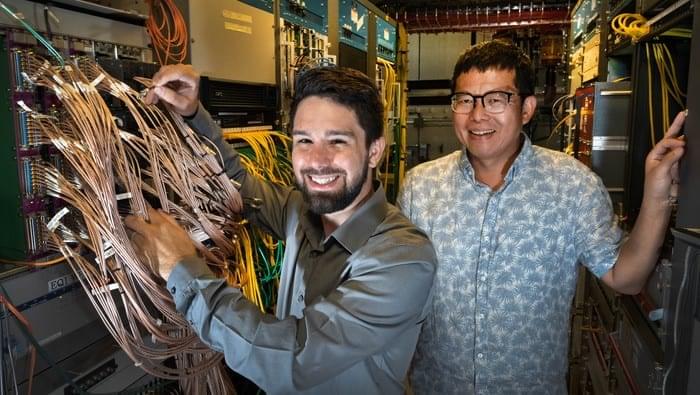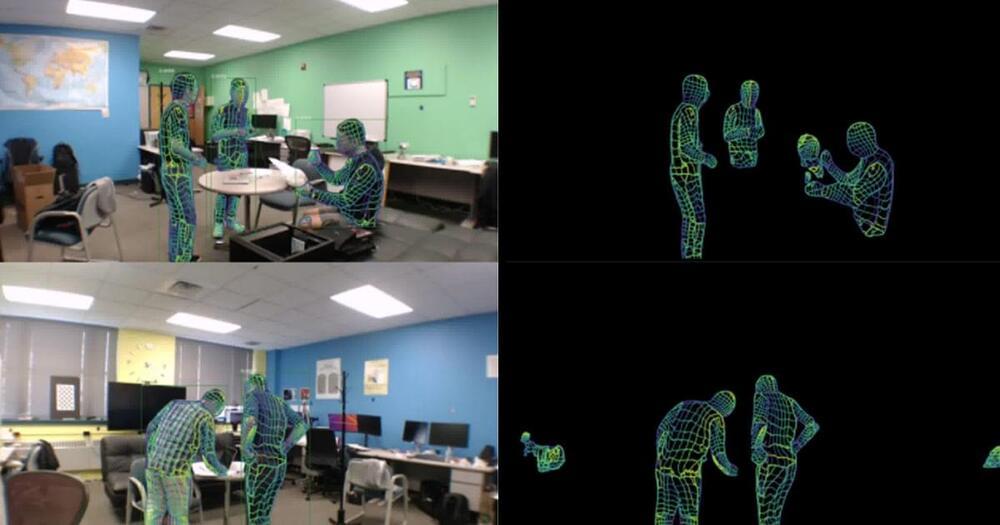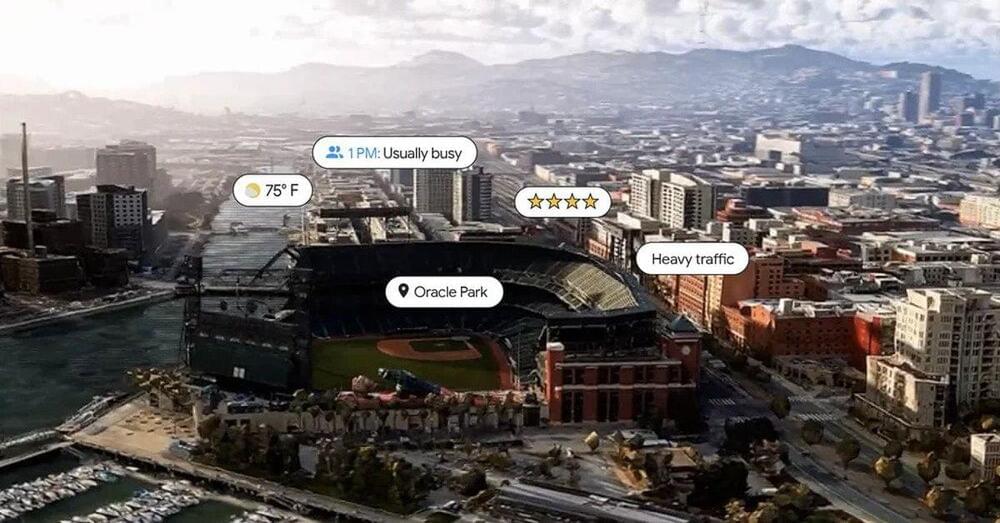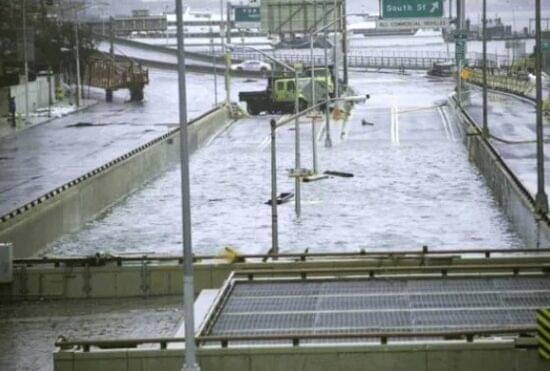Tomographic technique uses pions to analyse photon–gluon collisions.



Google is launching new updates for Maps that are part of its plan to make the navigation app more immersive and intuitive for users, the company announced today at its event in Paris.
Most notably, the company announced that Immersive View is rolling out starting today in London, Los Angeles, New York, San Francisco and Tokyo. Immersive View, which Google first announced at I/O in May 2022, is designed to help you plan ahead and get a deeper understanding of a city before you visit it. The company plans to launch Immersive View in more cities, including Amsterdam, Dublin, Florence and Venice in the coming months.
The feature fuses billions of Street View and aerial images to create a digital model of the world. It also layers information on top of the digital model, such as details about the weather, traffic and how busy a location may be. For instance, say you’re planning to visit the Rijksmuseum in Amsterdam and want to get an idea of it before you go. You can use Immersive View to virtually soar over the building to get a better idea of what it looks like and where the entrances are located. You can also see what the area looks like at different times of the day and what the weather will be like. Immersive View can also show you nearby restaurants, and allows you look inside them to see if they would be an ideal spot for you.
“To create these true-to-life scenes, we use neural radiance fields (NeRF), an advanced AI technique, transforms ordinary pictures into 3D representations,” Google explained in a blog post. “With NeRF, we can accurately recreate the full context of a place including its lighting, the texture of materials and what’s in the background. All of this allows you to see if a bar’s moody lighting is the right vibe for a date night or if the views at a cafe make it the ideal spot for lunch with friends.”
The company also announced that a new feature called “glanceable directions” is rolling out globally on Android and iOS in the coming months. The feature lets you track your journey right from your route overview or lock screen. Users will see updated ETAs and where to make your next turn. If you decide to take another path, the app will update your trip automatically. Google notes that previously, this information was only visible by unlocking your phone, opening the app and using comprehensive navigation mode. Glanceable directions can be used whenever you’re using the app, whether you’re walking, biking or taking public transit.

A team of researchers have come up with a machine learning-assisted way to detect the position of shapes including the poses of humans to an astonishing degree — using only WiFi signals.
In a yet-to-be-peer-reviewed paper, first spotted by Vice, researchers at Carnegie Mellon University came up with a deep learning method of mapping the position of multiple human subjects by analyzing the phase and amplitude of WiFi signals, and processing them using computer vision algorithms.
“The results of the study reveal that our model can estimate the dense pose of multiple subjects, with comparable performance to image-based approaches, by utilizing WiFi signals as the only input,” the team concluded in their paper.

Google is launching new updates for Maps that are part of its plan to make the navigation app more immersive and intuitive for users, the company announced today at its event in Paris.
Most notably, the company announced that Immersive View is rolling out starting today in London, Los Angeles, New York, San Francisco and Tokyo. Immersive View, which Google first announced at I/O in May 2022, is designed to help you plan ahead and get a deeper understanding of a city before you visit it. The company plans to launch Immersive View in more cities, including Amsterdam, Dublin, Florence and Venice in the coming months.

It’s a 40-minute livestream.
Google’s competitor to OpenAI’s ChatGPT may appear as soon as next week. The company will hold an event in Paris on Wednesday, Feb. 8, where it will discuss plans for its search engine.
The company isn’t revealing much about the event. The description merely says (Opens in a new window) : “We’re reimagining how people search for, explore and interact with information, making it more natural and intuitive than ever before to find what you need. Join us to learn how we’re opening up greater access to information for people everywhere, through Search, Maps, and beyond.”
It’s possible the event could focus more on Google’s conventional products, rather than AI. However, in an earnings call on Thursday, CEO Sundar Pichai said Google is preparing to unleash its AI programs to the public.

Microsoft co-founder Bill Gates knows a thing or two about paradigm shifts, having played a key role in personal computers becoming a thing. Today, he believes, an equally important development is beginning with ChatGPT and similar artificial intelligence tools.
“A.I. is going to be debated as the hottest topic of 2023. And you know what? That’s appropriate. This is every bit as important as the PC, as the internet,” Gates recently told Forbes, adding that he now spends about 10% of his time talking with Microsoft teams about their product road maps, despite having been long retired and focused on philanthropy.
ChatGPT, of course, is the A.I. chatbot that’s been making waves with its ability to respond to typed questions with eerily human-like responses. Launched a few months ago, ChatGPT now attracts more than 100 million monthly active users, according to a research note published Wednesday by UBS. It easily reached 100 million faster than TikTok or Instagram, the bank’s analysts noted, adding, “In 20 years following the internet space, we cannot recall a faster ramp in a consumer internet app.”

Olaf Sporns.
September 15, 2014
Abstract: Recent years have seen a rapid expansion of empirical and theoretical studies in connectomics – the emerging science of structural and functional brain networks. In this talk I will survey some of the recent advances and a few of the challenges for connectomics research, with an emphasis on human brain connectivity. Of particular interest are studies that employ network science methods for analyzing and modeling connectivity patterns. These studies have shown the existence of highly connected hub regions that play crucial roles in brain communication and the integration of information. Future applications of brain modeling and computation for understanding brain function and dysfunction will also be discussed. Overall, the new field of connectomics offers a unique opportunity for building a theoretical understanding of the function of the human brain.